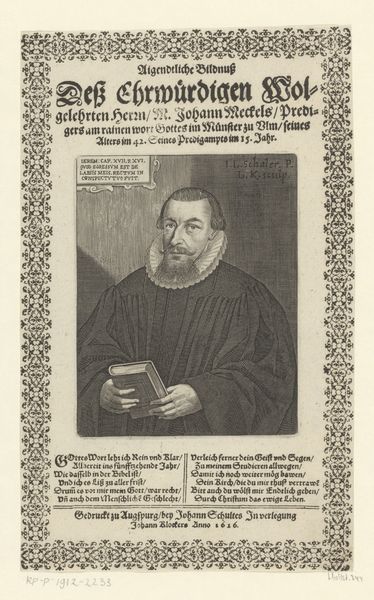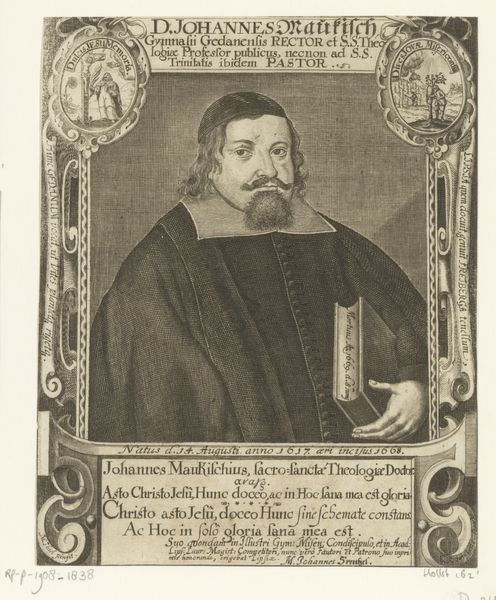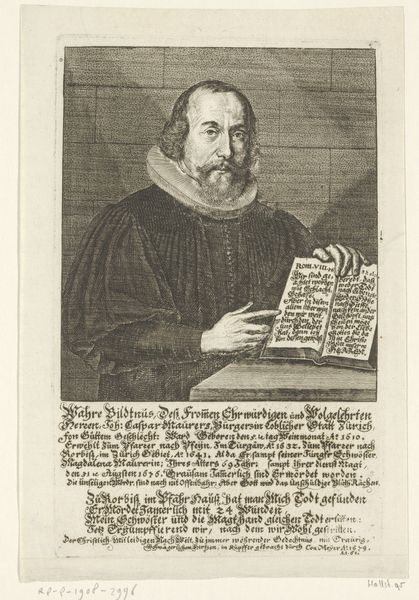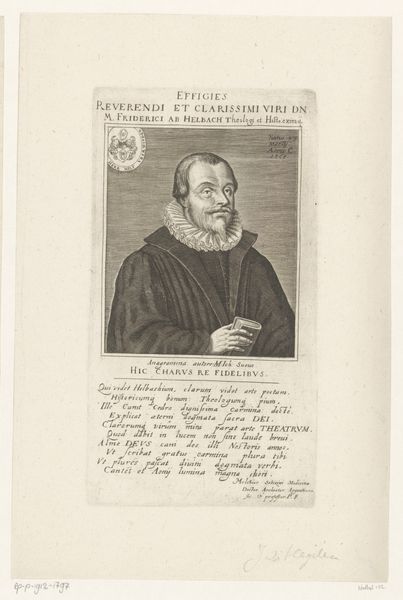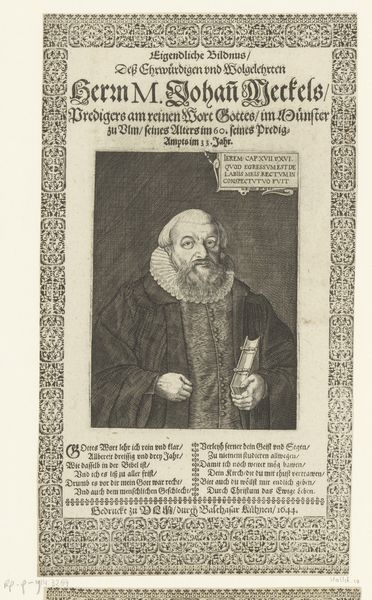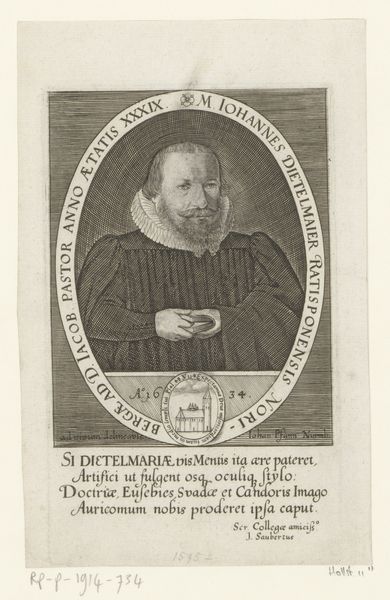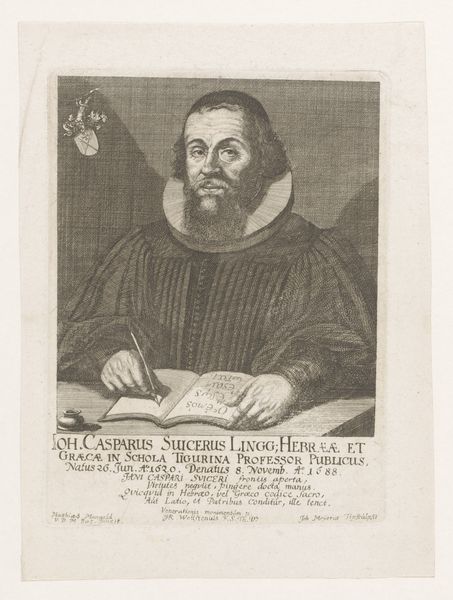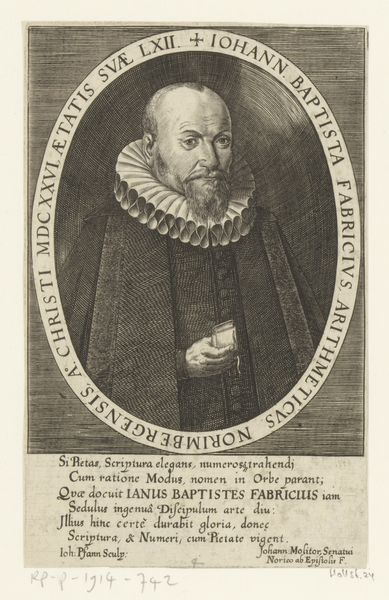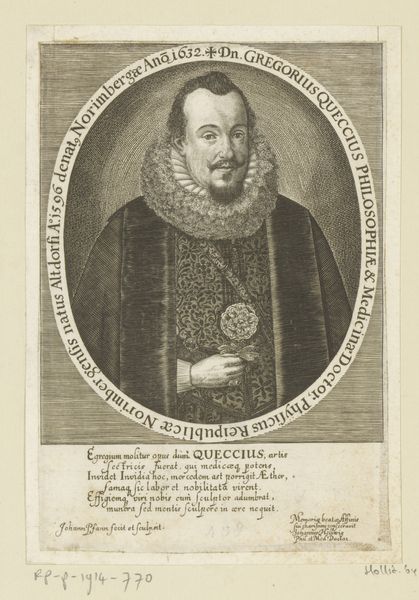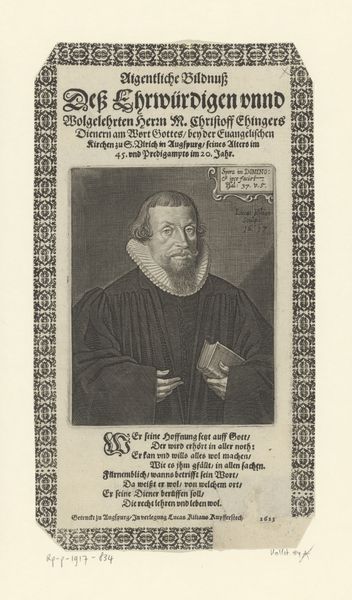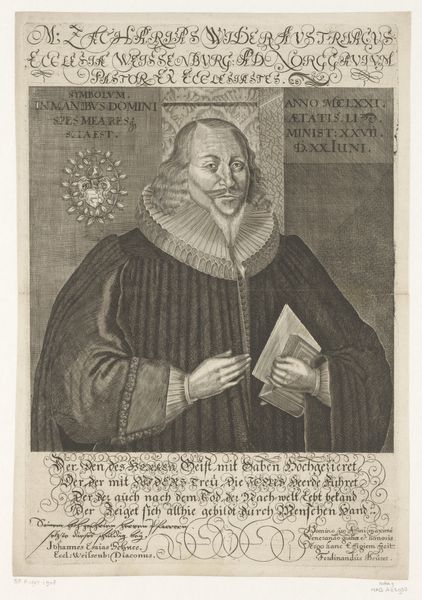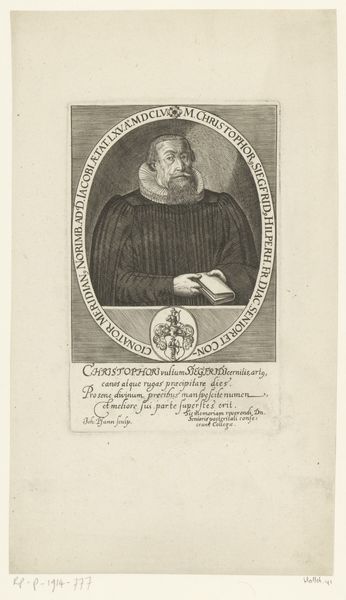
print, engraving
#
portrait
#
self-portrait
#
baroque
# print
#
old engraving style
#
northern-renaissance
#
engraving
#
historical font
Dimensions: height 130 mm, width 102 mm, height 250 mm, width 150 mm
Copyright: Rijks Museum: Open Domain
Curator: Here we have Lucas Kilian's 1627 engraving, "Portret van Balthasar Kerner," housed at the Rijksmuseum. A fascinating portrait of a clergyman, wouldn't you say? Editor: Indeed! It’s quite somber at first glance. The sharp lines of the engraving, combined with the sitter’s dark robes and intense gaze, create a very serious mood. There’s almost a starkness in the material; this print feels quite functional. Curator: I find that severity incredibly compelling. The portrait's laden with symbolism. Balthasar Kerner holds a book—representing knowledge and the scriptures. And do you notice the chalice? It may symbolize communion and the clergyman's role as a conduit for grace. The detailed lettering at the top and bottom gives us context, explaining his role as a preacher in Ulm. Editor: The text! A powerful reminder of print's role as a mass communication medium, allowing dissemination of image and information simultaneously. The frame, ornamented and floral, seems a rather stark contrast with the overall austerity of the portrait itself, drawing more attention to that central image by comparison. How was this intended to function, I wonder? As an affordable portrait for Kerner's admirers? Curator: Likely so. The print allows for wider dissemination of Kerner’s image and message. We might even argue that this wasn't merely a portrait but a visual sermon, designed to instill reverence and convey his intellectual and spiritual authority. The northern renaissance visual languages carry weight here, too. Editor: Visual sermon, I like that. The deliberate contrast of black and white, created by carving into the material, reinforces the theme of good versus evil, knowledge versus ignorance, echoing the text. Every choice, from the man's stern expression to the objects he carries, all meticulously produced to a precise effect. It really amplifies how social context drove aesthetic choices. Curator: It provides insight into the psychology of the era too. How a clergyman needed to project an image of piety, knowledge, and steadfastness. Kerner presents himself as a man devoted to his faith and community, an image meticulously constructed through the symbols and style. Editor: Ultimately, this print shows us the very real, very material means by which that kind of authority was produced and disseminated at that time. Looking at the process makes the purpose and lasting impact of that image much more understandable. Curator: Precisely, and tracing back, that connection solidifies the symbols' lasting potency. The emotional charge and visual associations continue, echoing across generations. Editor: Thanks to careful production!
Comments
No comments
Be the first to comment and join the conversation on the ultimate creative platform.
